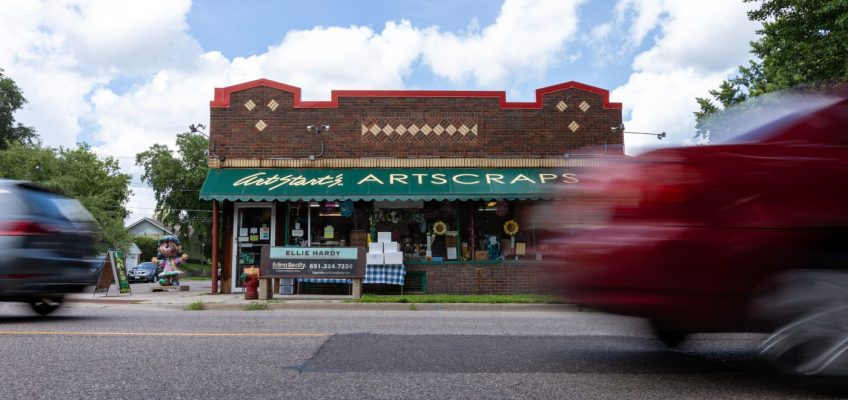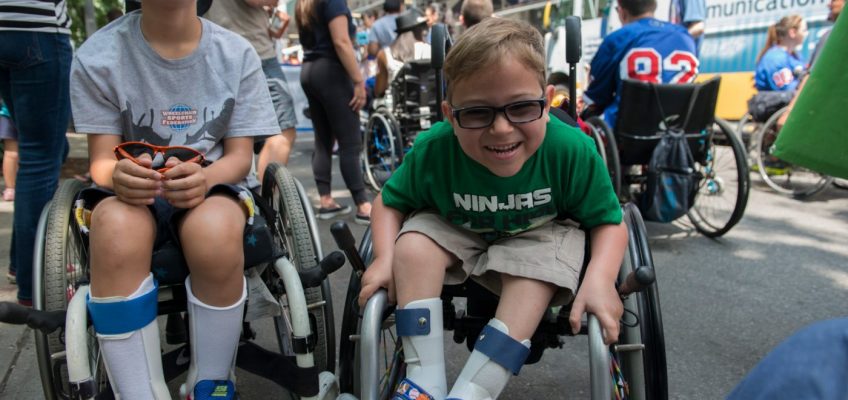Cardboard toilet paper rolls. Egg cartons. Vintage film slides. Most people wouldn’t think of these as art supplies, but the St. Paul nonprofit ArtStart sees potential for these materials to become projects such as fairy houses, lanterns and jewelry.
And after 32 years of providing affordable art materials at its ArtScraps Creative Reuse Materials and Idea Center on St. Clair Avenue, the nonprofit is purchasing the building in the Macalester-Groveland neighborhood.
“We’re really happy to have the building, because it helps us keep doing what we’re doing,” said executive director Anne Sawyer.
ArtStart collects donations of recycled materials and art supplies and sells them back to the public at low prices at its ArtScraps center. The organization also offers youth art camps, workshops in libraries and artist residencies in schools across the Twin Cities.
Sawyer said the nonprofit moved into the building on St. Clair Avenue in 1993, but didn’t have funding to purchase the building at the time.
ArtStart paid for a large portion of the building’s down payment this year with a grant from the F.R. Bigelow Foundation. Now the nonprofit is fundraising for the rest of the building’s payment and repairs, partly because it’s receiving less support from the Minnesota State Arts Board.
The Arts Board is giving less to organizations such as ArtStart this year because the board received about 25% less funding from the Minnesota Legislature, according to Sue Jens, executive director of the Minnesota State Arts Board.
“The fund is supported with sales tax revenue. So if sales tax revenue decreases, then the funds available in that are also lower,” Jens said.
ArtStart has currently raised $4,000 of its $10,000 goal, and is asking the community to help.
Community impact
A customer walks out of ArtStart’s ArtScraps ReUse Center in St. Paul on Thursday, July 24, 2025. (Bennett Moger / Pioneer Press)
ArtStart supported artist residencies in 20 St. Paul schools and provided 17,000 children and adults with workshops and camps during the 2024 fiscal year.
Puppeteer and artist Kallie Melvin was born in India and adopted to St. Paul. She attended the first ArtStart “Passport to India” youth camp 30 years ago as a student. This summer, she taught students how to make shadow puppets at the 2025 “Passport to India” camp.
“I had this opportunity to teach an art form from the country that I’m from with ArtStart,” Melvin said. “It was so amazing to just see the kids really drawn into creating their own puppets.”
Melvin said that as a kid, she would go to ArtScraps to find materials for crafts and school display boards.
“It’s just this really fun, vibrant place, even from the outside,” Melvin said. “Going there to get things for school projects was so exciting.”
Kris Klas is an adult basic education science teacher at the Hubbs Center in St. Paul. She often gets materials for hands-on classroom work and experiments at ArtScraps.
Klas said she’s especially grateful for ArtScraps now that Joann Fabrics and the nearby Treadle Yard Goods are closed.
Related Articles
St. Paul to host 2028 Transplant Games
Stillwater: Silver Sobriety marks 10 years with new location, new executive director
Children’s Minnesota names Dr. Emily Chapman new president and CEO
St. Paul and Minnesota Foundation announces new president, CEO with strong local ties
Beacon Interfaith weighs in on Bimosedaa, Kimball Court homeless housing
“We live in St. Paul, we don’t have a car, and we’re like, ‘How are we going to get fabric anymore?’” she said.
Klas also gets supplies from ArtScraps for leather working, block printing and home remodeling. She was looking for fabric for placemats at ArtScraps on Thursday.
“They bring so much light to the community. They’re just such a wonderful resource,” Melvin said. “It’s really exciting that they were able to buy the building.”
Sawyer said people can contribute to the ArtStart campaign by donating on Facebook at facebook.com/artstart.artscraps, mailing a check to the store at 1459 St. Clair Ave. or rounding up their next in-store purchase at ArtScraps.




